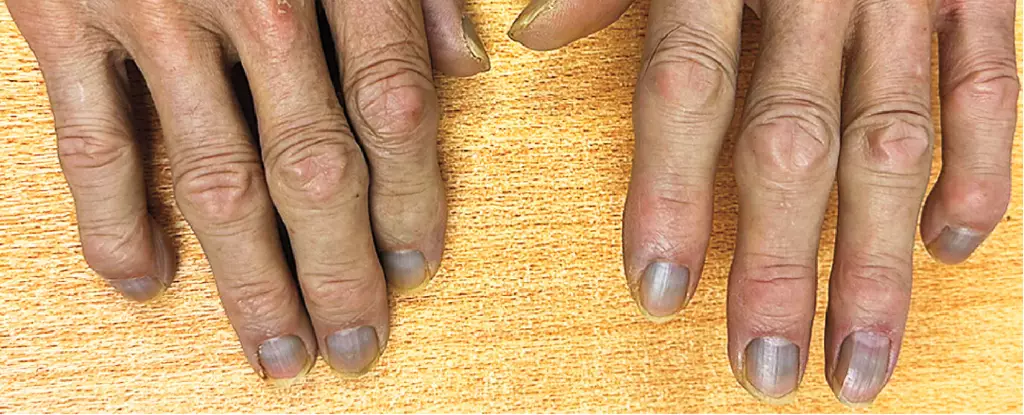In a recent case that highlights the complexities of diagnosing seemingly unrelated medical symptoms, an 84-year-old man presented to a hospital in Hong Kong with urinary flow obstruction. While the primary concern of his urinary issues captured the attention of the medical team, it was the unexpected grayish hue of his skin, eyes, and nails that piqued their curiosity. This ashen coloration wasn’t a sudden occurrence; the patient reported having this subtle discoloration for the past five years, suggesting an underlying condition that had gone unnoticed.
Clinical blood tests ultimately unveiled a startling revelation: the patient had a significant saturation of silver in his body, exceeding concentrations typically observed by over 40 times. This diagnosis led to the conclusion that he was experiencing argyria, a condition characterized by the deposition of silver in body tissues, resulting in the characteristic slate-gray skin tone. Such cases, though rare, raise critical questions about exposure sources and the implications of metal accumulation in the human body.
Argyria is not a newly identified phenomenon. Historically, it affected those in industries involving silver, particularly artisans and miners. These individuals came into contact with the metal as part of their occupational hazards. However, the condition can also arise from unintended silver ingestion, notably from certain medications that utilize silver for its antimicrobial properties. Despite its historical precedence, the continued use of silver-based treatments remains contentious, as today’s medical evidence does not support many of these applications. The U.S. Food and Drug Administration (FDA) has flagged colloidal silver—a solution containing tiny silver particles—as both unsafe and ineffective for treating any conditions.
The mechanisms behind silver accumulation are multifaceted. Silver can enter the body through inhalation, dermal absorption, or ingestion. Once introduced, it spreads as charged particles through the bloodstream, ultimately depositing in various tissues. Exposure to sunlight may exacerbate the condition, as UV radiation can trigger reactions that lead to the formation of compounds responsible for the skin’s altered pigmentation.
In the case of the 84-year-old man, identifying the source of relentless silver build-up posed a significant challenge. His occupation as a waiter appeared devoid of any obvious avenues for exposure, and as further investigations into his home environment yielded no conclusions, questions loomed. What could have led to such exceptional accumulation of silver in a man who had lived a seemingly typical life? Adding to the intrigue, none of his neighbors exhibited similar symptoms, diminishing the likelihood of a communal environmental factor.
Fortunately for the patient, the condition itself does not pose serious long-term health risks. While argyria primarily manifests in cosmetic changes, patients at extremely high concentrations might experience more severe repercussions, including potential impacts on the absorption of certain medications. In this instance, the patient faced a mere aesthetic inconvenience rather than a dire illness—though for those who find social stigma in physical appearance, the effect can be significant.
From a medical standpoint, the residual silver in the man’s body presents an ongoing concern for physicians. Unfortunately, there are no established treatments capable of effectively removing silver once it has accumulated to such a degree; the only proactive measure is vigilant monitoring. Physicians will likely incorporate regular evaluations of the patient’s silver levels to track any further increases or health alterations associated with this peculiar condition.
Although more questions remain than answers, this exceptional case does provide invaluable insights into the complexities of metal toxicity and the nuances of diagnosis in clinical practice. While the patient’s unique situation showcases the rare possibility of systemic silver accumulation, there lays a broader lesson in the health implications of unregulated supplements and the pressing need for heightened awareness regarding their use. For individuals using silver-based products, understanding the risks, despite their enticing marketing, is paramount to avoiding potential health complications.


Leave a Reply